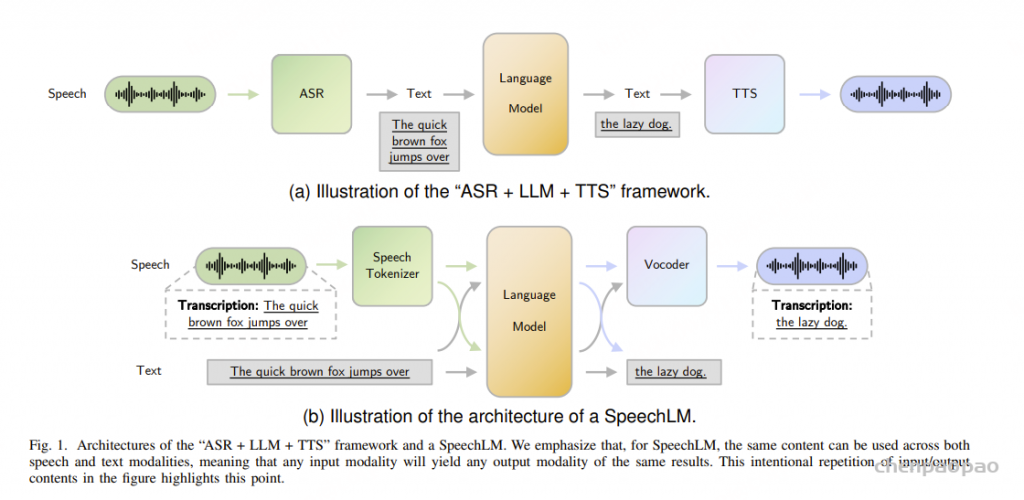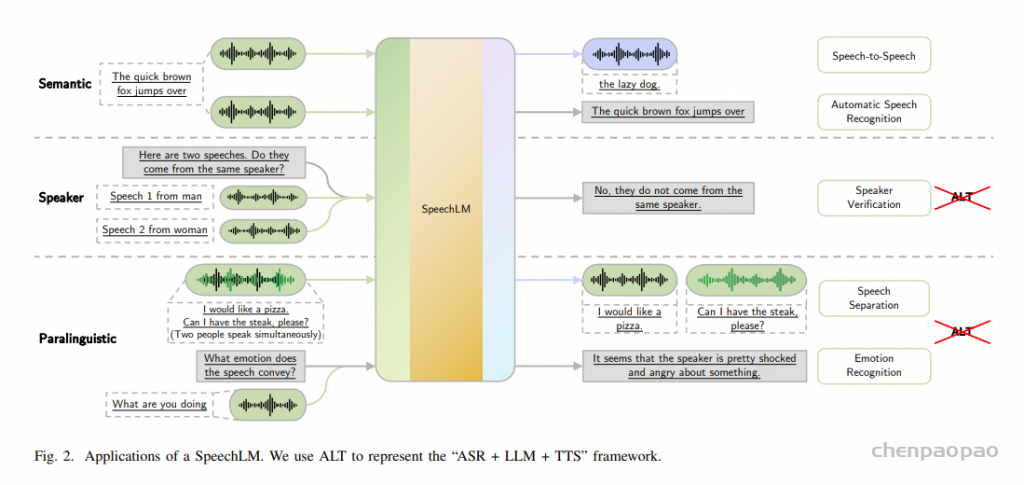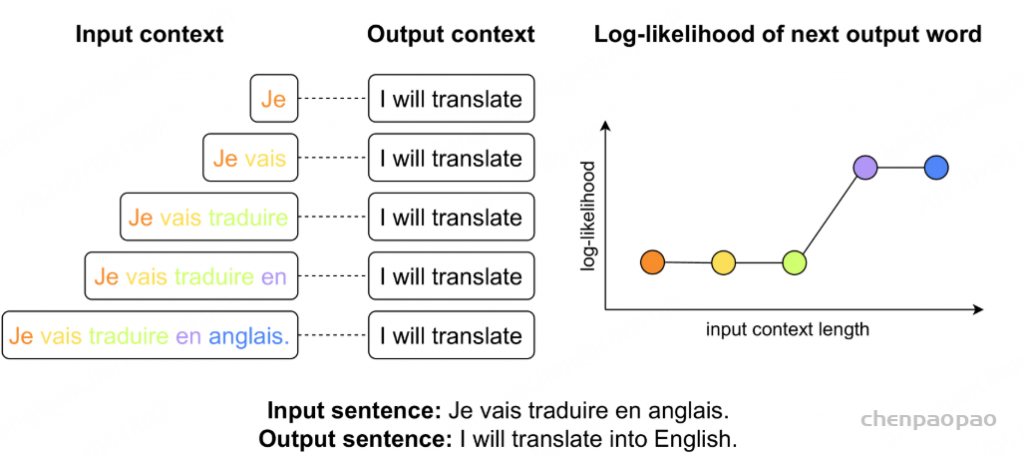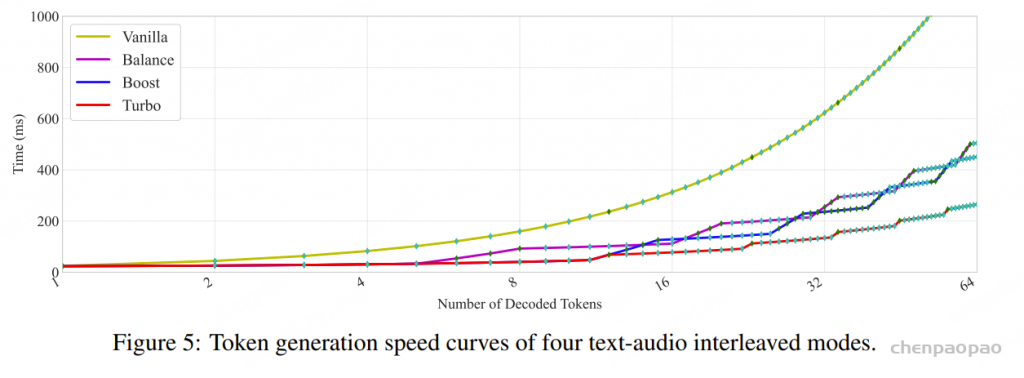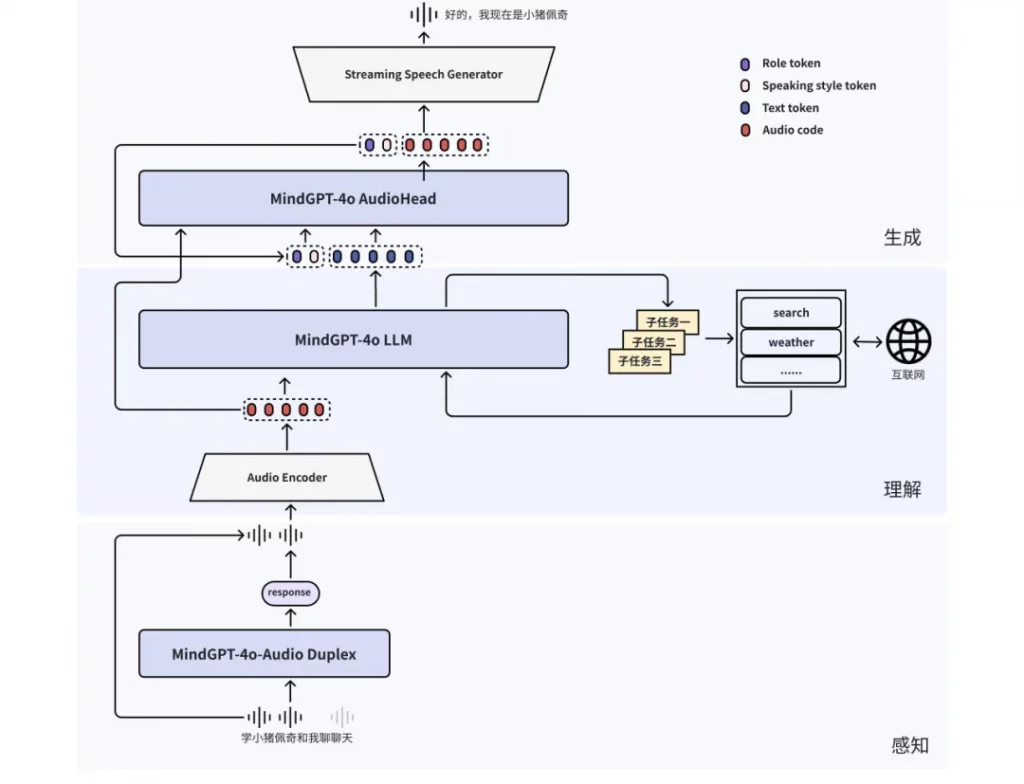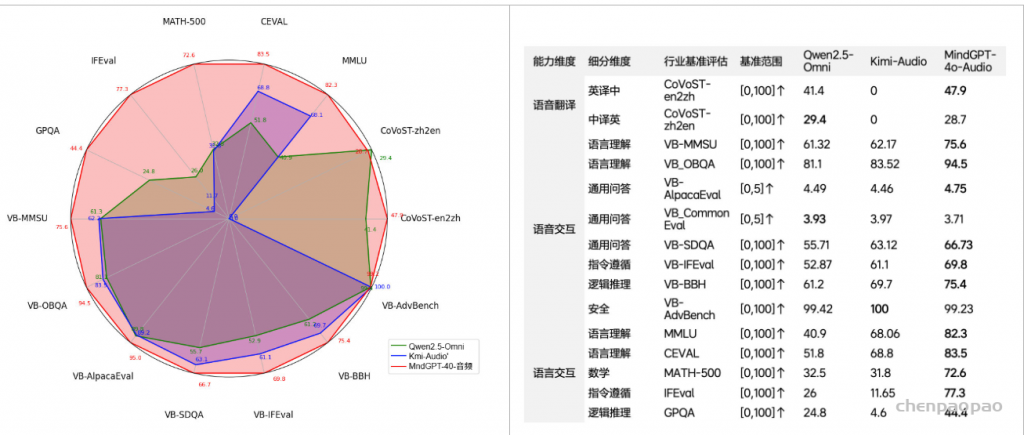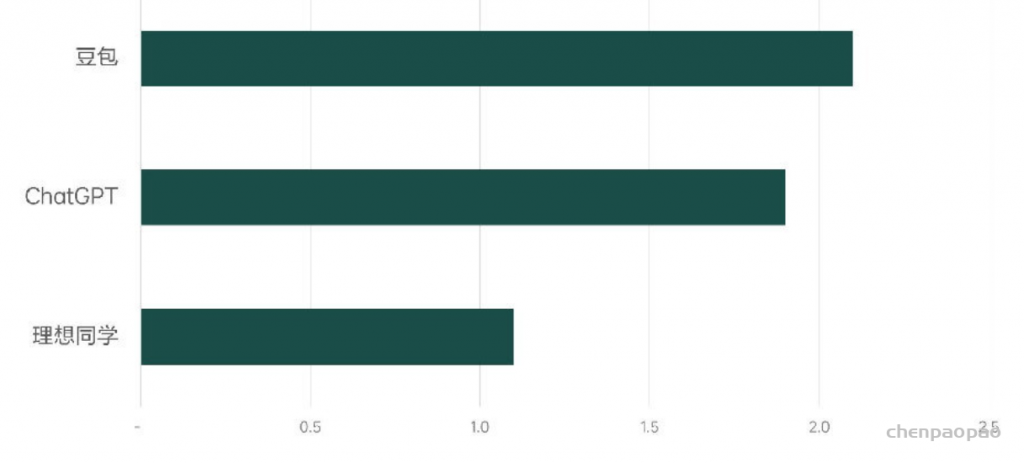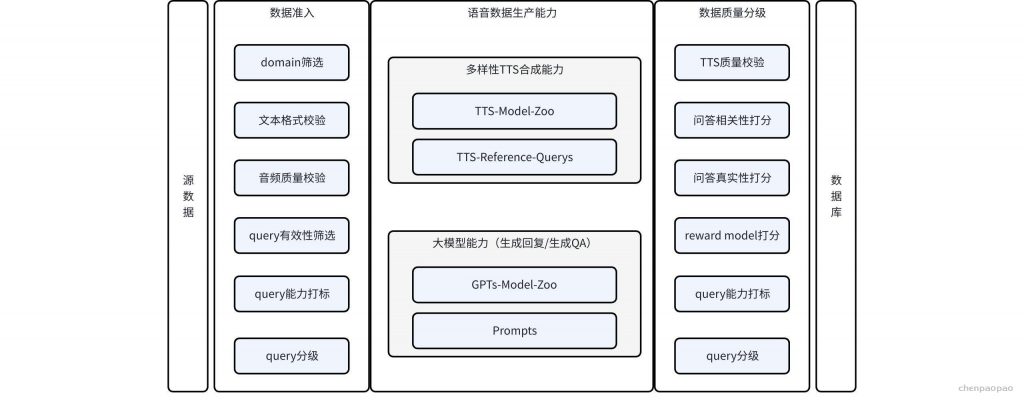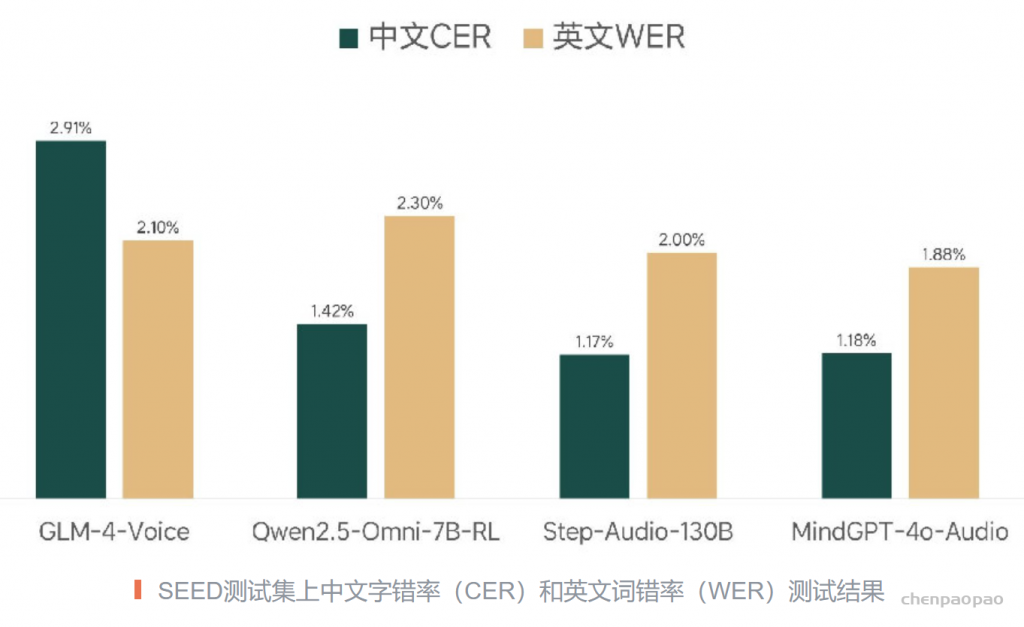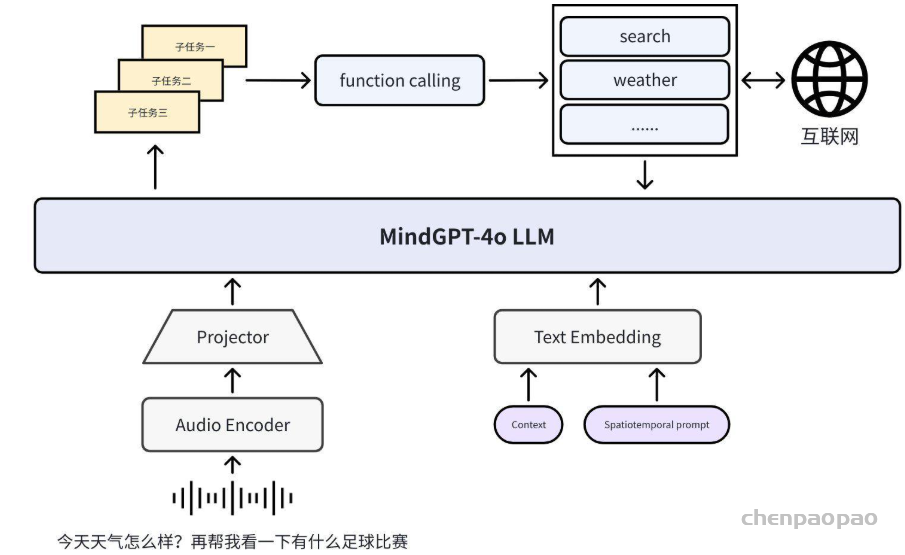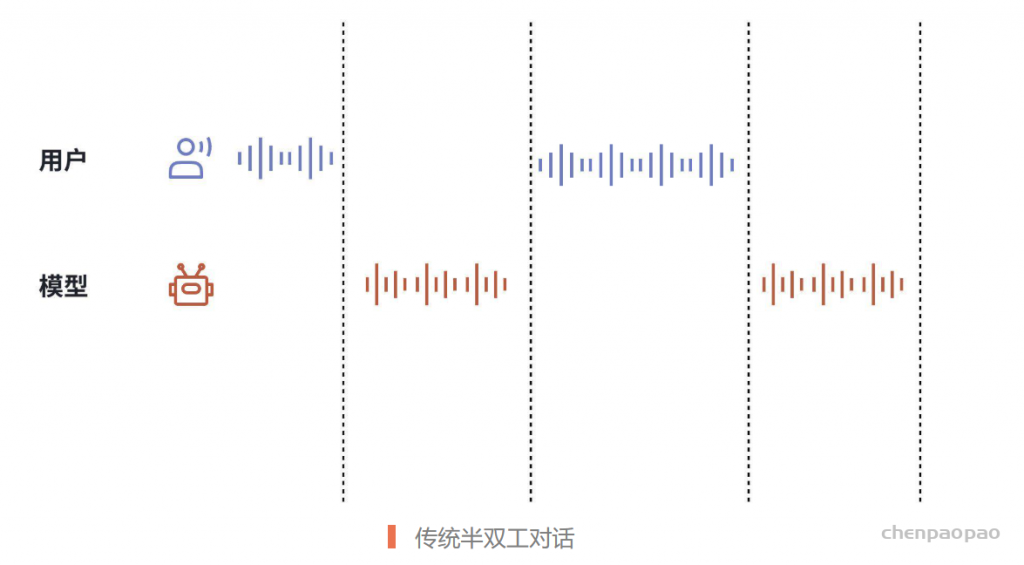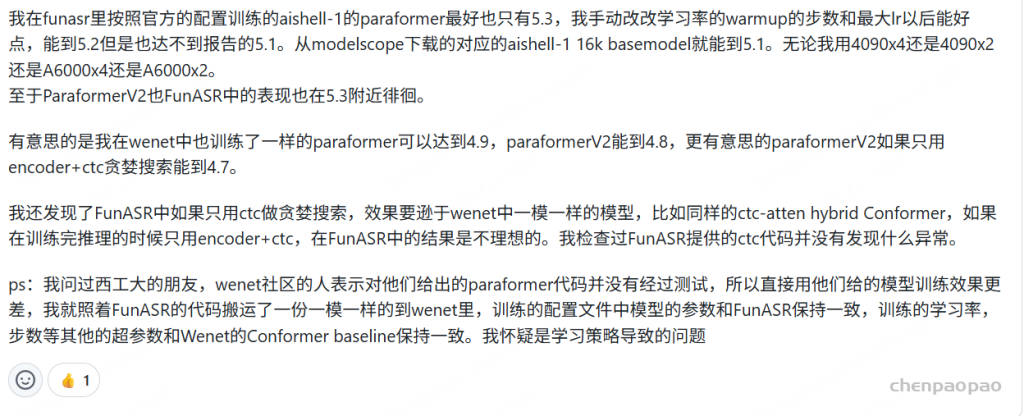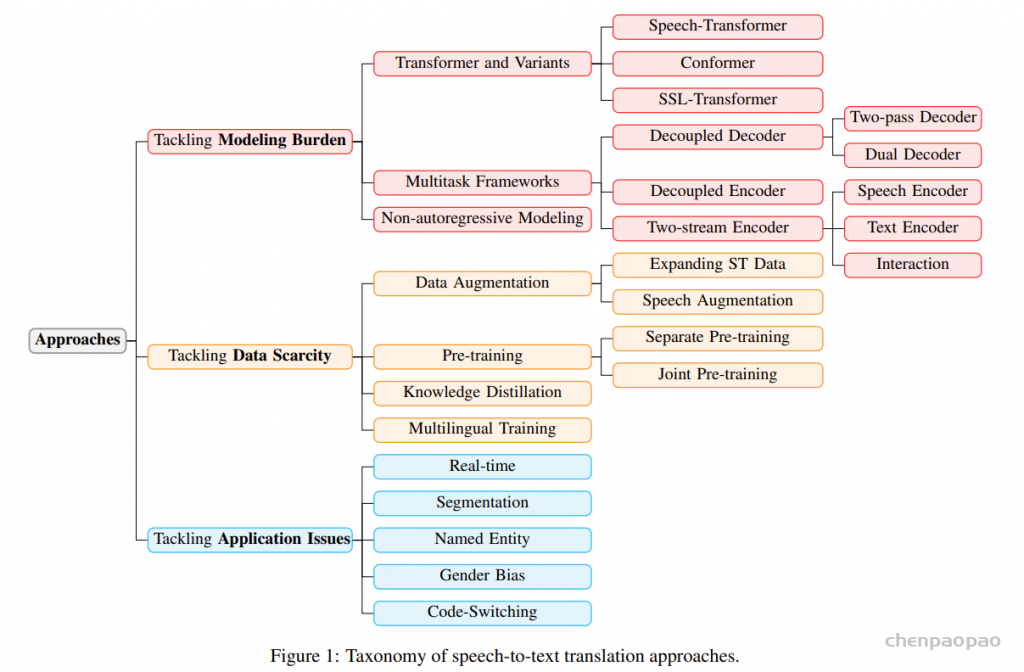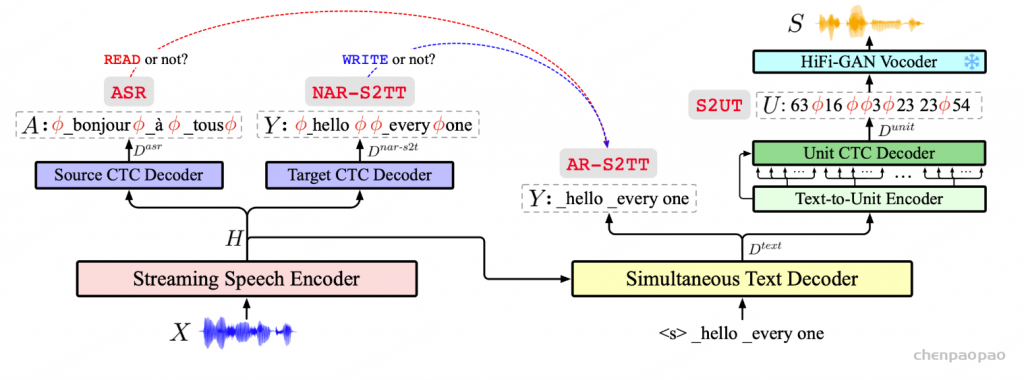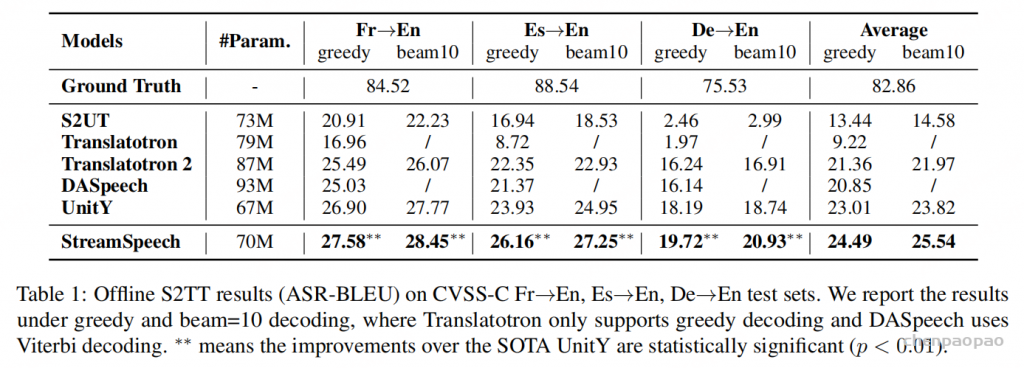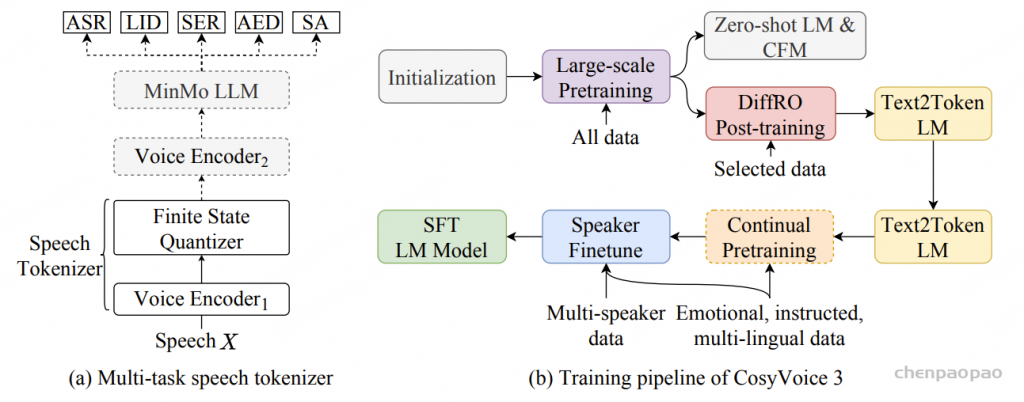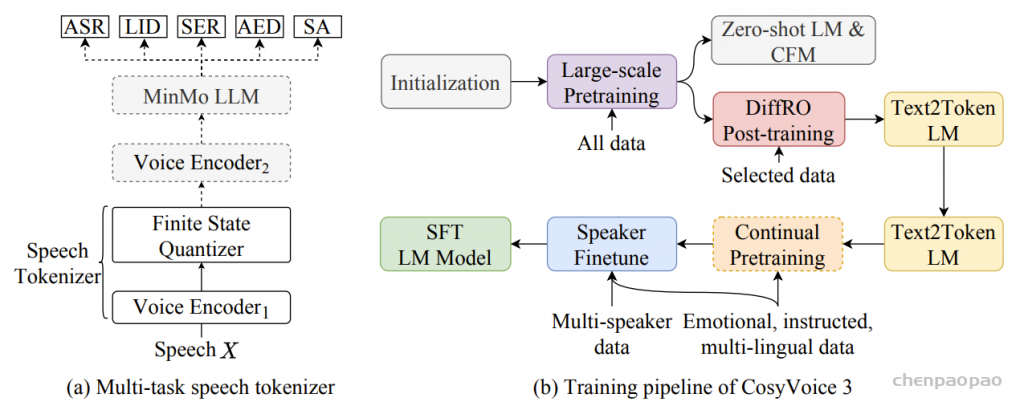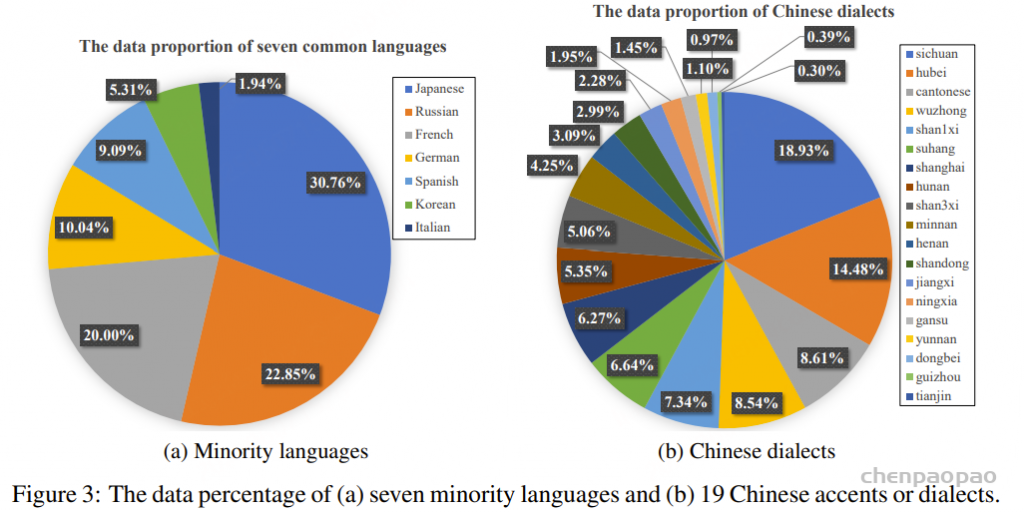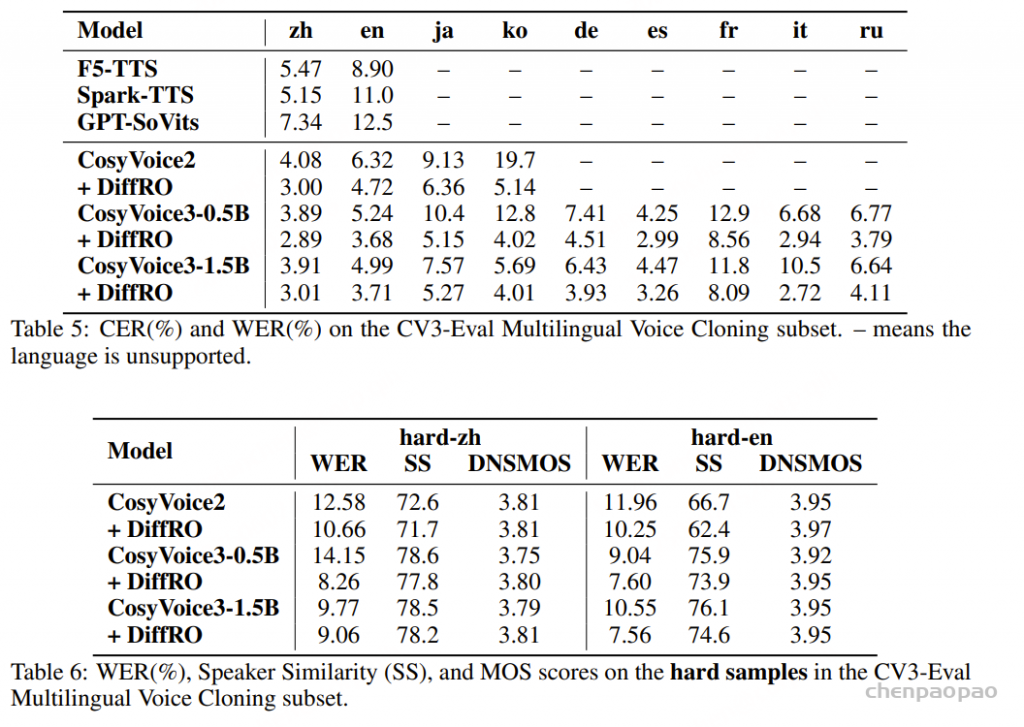[Read the paper] [Samples] [HuggingFace]
Hibiki ——一款 支持实时、高保真、设备端运行的语音到语音翻译模型 。它基于 Moshi 推理代码与模型权重开源 ,同时在研究论文中公开了所有训练细节。
什么是 Hibiki? Hibiki 是一款用于流式语音翻译 的模型(也称为同声传译模型 )。与传统的离线翻译不同(离线翻译需等到说话人完整表达完毕后才开始翻译),Hibiki 能动态地积累刚好足够的上下文,并实时逐段输出准确的翻译内容 。当用户说话时,Hibiki 会一边生成目标语言的自然语音(含声音迁移) ,一边输出对应的文字翻译。
架构: Hibiki 是一个仅包含解码器的同声传译模型 。Hibiki 利用 Moshi 的多流架构,同时建模源语音和目标语音。这使得 Hibiki 能够在生成目标语音的同时持续处理输入音频流。Hibiki 以恒定的 12.5Hz 帧率生成文本和音频标记 ,从而实现连续的音频输出流,并附带带时间戳的文本翻译 。Hibiki 的主干模型包含 20 亿个参数。我们还训练了一个移动版本 Hibiki-M,具有 10 亿个参数,用于设备端推理。
训练: Hibiki 依赖于对来自同一说话人的源语音与目标语音及文本之间对齐数据的监督训练。由于此类数据的实际数量非常有限,我们依赖于合成数据生成。在源语言和目标语言的转录文本之间,通过一种上下文对齐的弱监督方法进行词级匹配,该方法利用了一个现成的 MADLAD 机器翻译系统。由此得出的对齐规则是:一个词应当仅在可以根据源语言预测出来时才出现在目标语言中 。这一规则通过插入静音或使用具备语音控制和对齐感知能力的语音合成系统(TTS)生成目标语音来实现。
推理 :Hibiki 会持续编码源语音并生成目标语音。Hibiki 依赖简单的温度采样,因此兼容批处理,不同于依赖复杂推理策略的模型。此外,Hibiki 的语音转换保真度可以通过调整无分类器引导(Classifier-Free Guidance)的系数来控制:系数越大,语音相似度越高,但系数过大会导致翻译质量下降。Hibiki 目前仅支持法语到英语的翻译。得益于其仅解码器架构,Hibiki 可在单个 H100 GPU 上批处理最多 320 条并行翻译(使用无分类器引导时为 160 条)。其更小的替代模型 Hibiki-M 可以在智能手机硬件上本地运行。当前模型训练时支持最长 120 秒的序列,使用 40 秒的上下文窗口。
High-Fidelity Simultaneous Speech-To-Speech Translation 摘要:
Hibiki 利用多流语言模型同步处理源语音和目标语音,并联合生成文本和音频标记,以实现语音到文本和语音到语音的翻译。还解决了同步传译中的挑战,这与其顺序式翻译不同—后者在源语句结束后才开始翻译,而同步传译需要在实时过程中根据上下文的积累逐步生成准确的翻译。为此,我们引入了一种弱监督方法,该方法利用现成文本翻译系统的困惑度,按词识别最优延迟,并构造对齐的合成数据。在监督训练之后,Hibiki 可通过标准的温度采样方法实现自适应的同步语音翻译。在法语-英语同步语音翻译任务中,Hibiki 在翻译质量、说话人一致性和自然度方面展现了当前最先进的性能。
Introduction
为了训练 Hibiki,我们通过对单语音频的转录文本进行翻译与再合成,生成合成的平行数据。尽管这提供了在序列层面对齐的输入输出对,但无法学习细粒度的对齐信息。为此,我们引入了“上下文对齐”方法,这是一种基于现成机器翻译系统困惑度的简单方法,用于推导词级对齐。随后通过在目标语音中适当插入静音,使 Hibiki 能够在不依赖复杂推理策略的前提下,实现实时自适应的翻译流程。
困惑度(Perplexity)是一种衡量语言模型预测样本的好坏的指标,常用于自然语言处理中。如果一个模型预测得越准确,则其困惑度越低。
想象你在玩一个猜词游戏。你的朋友正在说一个句子,说到一半突然停下来,让你猜下一个词是什么。比如:
"今天天气真..."
"我想吃一碗..."
如果你能很容易地猜出下一个词(比如"好"或者"面"),说明这个句子对你来说"困惑度很低"。 如果你完全猜不到下一个词会是什么,那么这个句子对你来说"困惑度很高"。
在人工智能和语言模型中,困惑度就是用来衡量模型对文本的预测能力:
困惑度越低 = 模型越自信 = 预测越准确
就像你很容易猜到"今天天气真好"中的"好"一样
困惑度越高 = 模型越困惑 = 预测越不确定
就像面对"今天我遇到了一只..." 这样的句子,下一个词可能是"猫"、"狗"、"兔子"等很多可能,很难准确预测
此外,鉴于训练数据中说话人相似度差异较大,我们提出为训练样本标注说话人相似度类别。该方法避免了对训练数据的过滤,同时在推理阶段通过无分类器引导(classifier-free guidance)倾向生成说话人高度相似的语音输出。
方法
我们考虑一个源语言的语音话语,将其表示为单声道波形X∈Rfs⋅d fs⋅d 在已知 X 的情况下对 Y 的建模应具有因果性 ,并且相对于源语音具有最小延迟,例如与人工同声传译员在实时翻译场景中所面临的约束相同。
为了通过监督学习学习这一约束,目标语音 Y 本身必须构建为满足因果性约束。我们首先假设 Y 满足这一约束,并介绍如何对其分布进行建模。随后,我们引入一个信息论准则,用以验证 Y 相对于 X 是否具有因果性 ,并进一步将一个非因果的翻译转换为一个因果的翻译 。
模型
以 Moshi框架为基础,对从神经音频编解码器中获得的多个离散标记序列进行联合建模。
Neural audio codec
我们使用预先训练的因果和流式 Mimi 编解码器将 X 和 Y 编码为低帧率的离散标记序列。
编码器将持续时间为 d 的输入波形转换为一个潜在向量 U∈RC×fr⋅d ,其中 C是潜在空间的维度,帧率 fr=12.5 Hz。随后,U 被投影到其在一个包含NA
在语言建模任务中,我们关注的不是量化后的潜在向量及其残差,而是其在码本中投影对应的离散索引。我们将这些索引表示为 (At,q)∈{1,…,NA}fr⋅d×Q 。在 Mimi 中,帧率为 fr=12.5 Hz,投影次数 Q 最多为 32,但我们实际使用不超过 16 个。
第一层量化输出被训练用于复现来自 WavLM 自监督音频模型中获得的语义信息。我们将 At,1 称为语义标记(semantic tokens) ,而将 At,q≥2 称为声学标记(acoustic tokens) 。
这些声学标记按从粗到细的层级排列:前几层承载最重要的音频信息,后续层则建模更精细的音频细节,从而确保感知上的平滑与自然性。
Joint modeling of discrete audio tokens
音频流的离散标记无法轻易地被压缩为一个具有合理基数和帧率的单一离散序列。因此,我们采用 RQ-Transformer 在时间轴 t 和量化器轴 q上联合建模 At,q。
该模型由一个大型的 时序 Transformer(Temporal Transformer) 组成,其运行帧率与编解码器相同,即 fr,并接收至今为止生成的所有标记作为输入,即所有 t≤fr的标记
A0 被定义为指示生成开始的确定性标记。然后,较小规模的深度 变换器在量化器轴上对标记 At,1,…,At,Q 进行自回归建模,例如,对于所有 t≤fr⋅d 和 q≤Q :
At,0 也是一个特殊令牌,其目标是:
我们进一步引入了2个时间步长的声学延迟,这意味着我们建模的是 τ(A)t,q而非直接的 At,q。
0 为特殊标记。在使用编解码器解码音频之前,会移除延迟。
生成“内心独白”(即与生成音频内容对齐的填充文本标记)有助于提升生成音频的质量和稳定性 Translation as multistream modeling
我们已经介绍了方程(1)和(2)中的 RQ-Transformer 如何实现对多路离散标记流的联合建模。我们将该框架改编用于联合语音到语音与语音到文本的同步翻译任务。具体做法是将目标译文 Y 的音频标记 AY X
Hibiki 还预测一个文本流 Wt,对应于输出 Y 的转录文本,并在词与词之间加入足够的填充以保证其与音频保持对齐。需要注意的是,与以往多任务翻译工作不同,Hibiki 在推理阶段主动利用了这一能力。这里我们用 Wt表示文本流,其基数为 NW fr
Alignment and synthetic interpretation data
我们假设对 (X,Y) 尊重同声传译的限制。 我们现在引入一个无监督的标准来估计和执行因果关系 源语句和目标语句之间的依赖关系。
文本域比齐
我们首先在文本域中形式化地表达这些约束。设 S=(S1,…,Sn)表示源语句 X中的词序列,T=(T1,…,Tm) 表示目标语句 Y 中的词序列。
理想对齐(Ideal alignment) :我们希望定义一个理想的对齐序列 (aj ideal m j ideal j 个目标词 Tj Si 的索引,以最小化对 Tj 的不确定性。
若训练使用的对齐比 aideal 激进 (即目标词提前生成),则模型在推理时可能出现幻觉现象 (hallucination);而若对齐更保守 (即目标词延后生成),则模型依然保持因果性,但会引入额外的延迟 。
上下文对齐(Contextual alignment) :
我们引入一个标准来估计 aideal
我们预期 logpj,i 随着 i 的增加而上升,因为更多的上下文信息通常更有利于生成正确的翻译。我们的假设是,对于某个目标词 Tj 增量 δj,i=log(pj,i )−log(pj,i− 1) 在 i=aj 时达到最大值 。也就是说,第 j 个目标词的生成在该位置获得了最大的上下文收益 。
为估计 log(pj,i ) ,我们使用现成的文本翻译语言模型 MADLAD-3B,将其输入截断为前 i 个源词,并计算预测第 j 个目标词的对数概率log(p^ j,i 上下文对齐 方法,用以估算每个目标词最优的等待位置,并以图 3 的形式加以示意。
图3:我们使用一个预训练的文本翻译模型,计算目标词 “into” 在不同输入截断条件下的对数似然(log-likelihood)。当对应的源词 “en” 出现在输入中时,我们观察到“into”的对数似然显著上升(详见公式(6))。这表明该源词提供了关键的上下文信息,从而支持了我们对最优对齐点的判定方法。 音频域对齐
给定一对语音对齐样本 (X,Y),我们使用 Whisper 模型对其进行转录并提取时间戳,然后应用公式(6)计算对齐位置。如果目标语句 Y 中第 j 个词的时间戳在源语句 X 中第 aj ctx j ctx
为了降低对齐错误的影响,我们要求目标语音 Y 相比上下文对齐结果至少滞后 2 秒 ;同时,我们会排除局部延迟中高于滑动窗口(5 个词)平均延迟 25% 的“尖峰”异常【某个词的时间延迟相对于其上下文明显偏高 ,高出周围词平均延迟的 25% 以上】。
静音插入(Silence insertion) :
若 Y 不满足对齐要求,可通过在目标词前插入适量静音段来调整其时序,如图 1 所示。然而该方法存在两点限制:
当时间戳不准确或词之间没有自然停顿时,静音插入可能造成生硬的语音切断; 调整后的 Y 可能相对理想对齐严重滞后,例如当 Y的语速慢于 X 时。 该方法用于语音翻译训练阶段的样本对齐。
对齐感知的语音合成(Alignment-aware TTS)
为了获得更加自然的对齐语音数据,我们使用具备硬性与软性位置控制能力 的 TTS 模型对 Y 进行(重新)合成,同时保留对说话人风格的准确建模。这种方法不仅可以生成对齐更好的训练数据,还可提升词错误率(WER)和说话人相似度。
我们训练一个 TTS 模型,其输出同时包括音频和与之同步的文本序列,并在输入中加入说话人条件。文本流被强制与目标文本完全一致 ,模型仅允许插入填充标记 。音频输出相对于文本是滞后的,以便其内容受文本控制,不论是内容还是时间戳。
当 TTS 提前于对齐点 actx
我们对每个输入生成 6 到 8 个候选样本,优先根据词错误率选出最佳结果,其次考虑说话人相似度。该方法仅应用于语音翻译微调数据集 的构建。
声音迁移(Voice Transfer)
改进语音迁移数据 :在训练带有声音迁移功能的语音翻译模型时,通常采用同一说话人的合成配对序列 进行监督训练。然而,图 4 显示,该数据集中源语音和目标语音的说话人相似度 (以说话人嵌入的余弦相似度衡量)平均仅为 0.23 ,相当低。作为参考,当前最先进的跨语种声音迁移系统的平均说话人相似度约为 0.40 。因此,我们使用对齐感知的 TTS 重新生成了 CVSS-T 数据,这使得迁移语音可以更好地保留说话人特征。如图 4 所示,重新合成后的 CVSS-T 数据的平均说话人相似度提升至 0.47 。尽管如此,我们的训练数据混合了合成数据与重新合成的 CVSS-T,整体相似度仍分布较广泛 ,其中仍有大量样本低于 0.40。
条件训练(Conditional Training) 如果直接筛选出说话人相似度高的数据用于训练,确实可以提高声音迁移效果,但会导致训练样本显著减少,从而可能损害翻译质量。例如,若仅保留说话人相似度大于 0.40 的样本,将导致 训练数据减少约 45% 。因此我们采用条件训练(conditional training) ,在训练过程中告知生成模型每个样本在声音迁移方面的可靠性 。我们为每个训练样本打上一个离散的“声音迁移评分”,其标签来自以下集合:
{ very_bad, bad, neutral, good, very_good }
评分依据是说话人相似度的分位数划分,每个评分标签对应一个可学习的嵌入(embedding),在模型的每个时间步加入输入中。值得注意的是,这些分位点是在合成数据和 CVSS-T 数据合并前计算的,以确保模型学习的是实际的说话人相似度 ,而不是将某标签“误绑定”到某特定数据集。在推理阶段,我们始终传入 “very_good” 标签,以期生成具有良好说话人保持能力的语音。
无分类器引导(Classifier-Free Guidance) 我们采用**无分类器引导(classifier-free guidance)**来增强条件训练的效果。具体做法是:分别使用 very_good 和 very_bad 条件下计算输出 logits,然后结合两者以调整采样过程,从而增强模型在推理时对说话人风格的控制能力。
这与实时推理兼容,因为它能以批大小为 2 同时生成两组 logits。结果表明,这种方法能显著提升语音转换效果。
Experiments
训练策略
通过以下步骤训练一个法语-英语的语音翻译系统:
文本预训练。 我们首先在多语言的纯文本数据上,从头开始预训练 Temporal Transformer,采用下一个词预测任务
音频预训练。 在预训练好的文本模型基础上,使用非平行的法语和英语数据,在单流设置下进行音频预训练
语音翻译训练。 我们构建了一个约包含 4 万小时法语和英语语音的翻译数据集。首先从一批富有表现力的法语音频中提取约 230 万条单说话人的语音片段,每段时长约 60 秒。我们使用 Whisper的 large-v3 模型对这些片段进行转录,并借助 PySBD将转录文本分句,然后使用 MADLAD-3B分别翻译每个句子,最后重新拼接成英文翻译文本。我们利用 TTS 系统合成语音,条件是原始法语说话人的身份(使用一段 10 秒的语音)。我们应用静音插入技术,以获得同声传译的语音对。
我们进行基于说话人相似度的条件训练,并对源语音频施加噪声增强。在每对训练数据中,我们在源语音流中语音结束后首帧加入一个特殊的输入 EOS 标记,在文本流中也加入另一个特殊 EOS 标记,指示模型生成语音的结束。
语音翻译微调。 我们使用引入的对齐感知 TTS 技术,构建了一个包含长句式的合成数据集,并改进了 CVSS-T/train 数据集,具有自然停顿和较高的说话人相似度,总计约 900 小时。
Hibiki-M 的训练。 其训练流程与 Hibiki 相同,先进行文本和音频预训练。在语音翻译训练阶段,通过软蒸馏从 Hibiki 获得知识,再进行相同的微调步骤(不再进行蒸馏)。
推理:
我们使用流式编解码器对音频进行编码,并将生成的 token 输入 Hibiki,同时解码输出 token 以获得流式翻译。在输入结束时,我们向模型发送一个 EOS(结束)标记,并持续采样,直到模型自行生成一个 EOS。推理参数通过对 Audio-NTREX 的保留 8% 数据和 CVSS-C 的验证集分别进行交叉验证来确定。对于 Audio-NTREX,最优参数为 γ = 3.0,温度为 0.8,audio token 的 top-k 为 250,text token 的 top-k 为 50。在 CVSS 上,除了对 text token 使用温度为 0.1 的采样外,其余配置相同。我们推测,较低的文本采样温度通常有助于提升翻译质量,但可能导致模型过早生成 EOS 标记 。
Results
表 1: 与离线基线系统的对比结果。我们还报告了一个闭源流式模型(*)的性能,因为它采用了相同的评估协议。表 1 将 Hibiki 与在翻译时可以访问完整源音频的离线基线模型进行了比较。尽管 Hibiki 进行的是同声传译,但它的表现优于所有模型,包括 StreamSpeech 的离线版本。表 2 将 Hibiki 与可用的同声传译基线模型进行了对比。在短格式设置中,我们的模型优于 StreamSpeech 和 Seamless,但平均延迟时间增加了 0.7 秒。长格式数据集的挑战更大,因为 StreamSpeech 无法生成清晰易懂的翻译。Hibiki 的表现优于 Seamless,但延迟时间平均高出 0.8 秒。
音频保真度。
如表 2 所示,关于说话人相似度的客观评估结果表明,Hibiki 在语音转换方面显著优于 Seamless(我们未评估 StreamSpeech,因为它不执行语音转换)。表 3 中的人类评估结果进一步验证了这一点,并显示 Hibiki 在音质和自然度方面远高于 Seamless,接近专业人工口译音频的真实水平。
这意味着 Hibiki 不仅能够生成高质量的音频,还能在语流中插入流畅且自然的停顿。
消融实验:对齐策略。
总体而言,上下文对齐在翻译质量与延迟之间提供了最佳平衡。
消融实验:无分类器引导(Classifier-free guidance)。
附录中有趣地展示了:将 γ 增大到极端值时,会导致生成的语音出现夸张的法语口音(即我们的实验中使用的源语言),我们认为这是由于用于标注数据的说话人模型存在偏差所致。
消融实验:通用消融。
推理能力
批量推理。 Hibiki 的推理采用恒定帧率下的温度采样,这使得流式的无分类器引导和多个语音源的并行处理变得非常简单。这一点不同于 Seamless 和 StreamSpeech,它们的推理策略更复杂,需对每个序列做出动态且不规则的决策,因而难以批量处理。图 5 显示,即便同时处理 320 条语音序列(或在无分类器引导下处理 160 条),Hibiki 在 H100 上仍能保持快于实时的推理速度。
端侧推理。 我们蒸馏得到的 Hibiki-M 在短文本和长文本翻译任务上都能与 Seamless 相媲美,如表 2 所示。我们将其在长音频上的较低说话人相似度归因于其建模的量化器数量较少(8 个而非 16 个),这使得音频比特率降低了一半。图 6 展示了 Hibiki-M 在 iPhone 16 Pro 上的推理轨迹。即使使用支持无分类器引导所需的批量大小为 2,Hibiki-M 在一分钟的推理过程中仍能保持快于实时的速度。若使用滑动窗口注意力对 Hibiki-M 进行训练,还可进一步提升其实时性能。
局限性
本研究仅聚焦于一个翻译任务(法语到英语),若扩展到更多语言,可能需要借助 MADLAD 这类大规模多语言模型,但这也意味着需为更多语言训练相应的 TTS 系统。此外,虽然 Hibiki 在与 CVSS-C 的真实目标对比时能达到 35.5 的 ASR-BLEU 分数,但若将其输出与 MADLAD 的文本翻译对比,则可达到 47.9 的 ASR-BLEU。这表明 Hibiki 非常擅长生成与 MADLAD 类似的翻译结果;若使用更优或更丰富的伪目标(pseudo-target)对其进行训练,Hibiki 有望进一步提升相对于真实目标的翻译质量。
